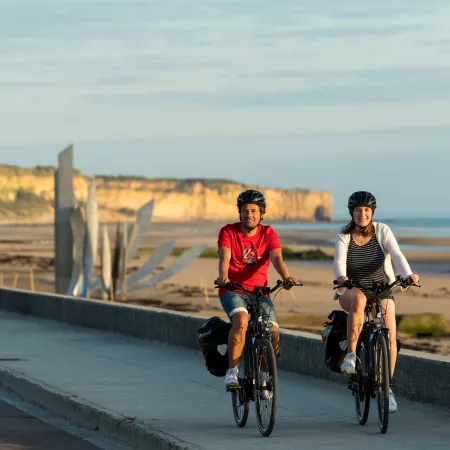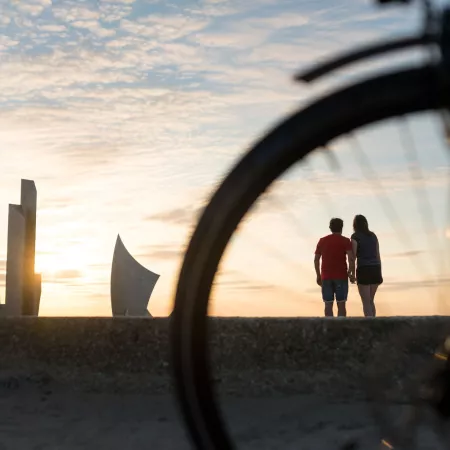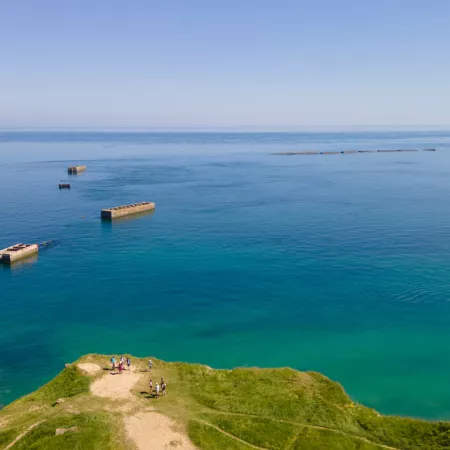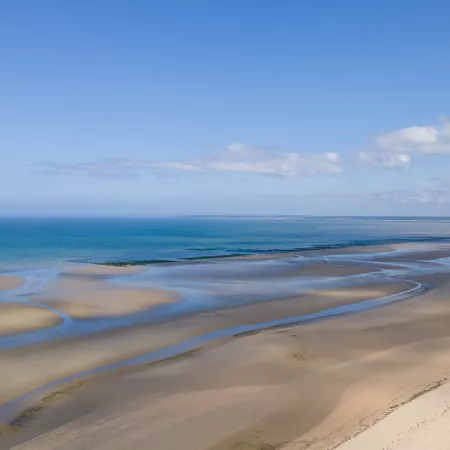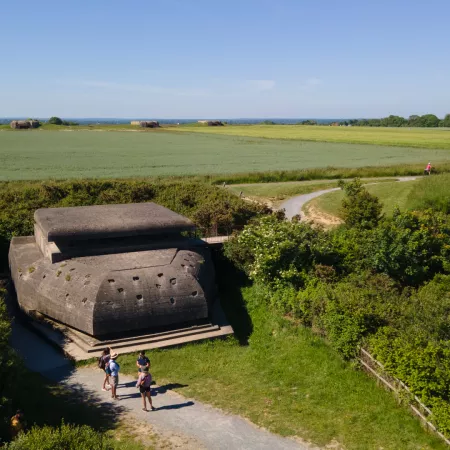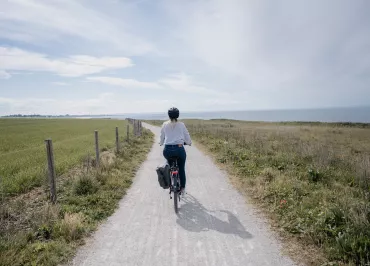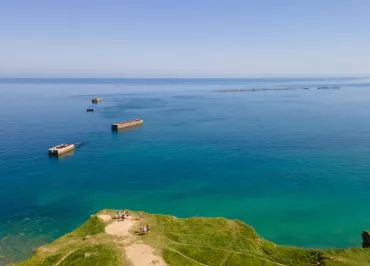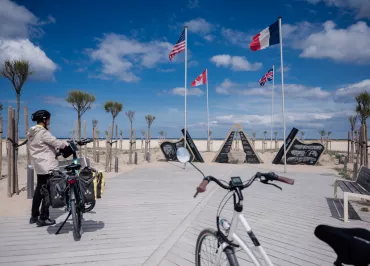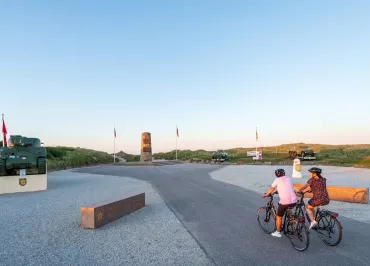The D-Day landings Beaches
Step back in time
The Normandy beach landings of 6 June 1944 became the largest amphibious and airborne operation of all time. Still to this day, millions of visitors come and gather on the landing beaches to pay homage to the soldiers who liberated France.
Back to 1944...
The D-Day landings, codenamed Operation Neptune, took place during the night of 5 to 6 June 1944, towards the end of the Second World War.
It involved air and naval bombing campaigns, followed by thousands of vessels crossing the English Channel and the unforgettable early morning landings on the beaches. The goal was to secure an allied bridgehead in north-west Europe and open up a Western front. The landings marked the beginning of the famous Battle of Normandy. The operation unfolded throughout June 1944, lasting until the 30th.
On which beaches did the landings take place?
Each landing beach had its own specific features and characteristics. There were five in total, all located close to one other along the coast. Here are the different beaches to visit from west to east 👇🏼
- Utah Beach (American sector)
- Omaha Beach (American sector)
- Gold Beach (British sector)
- Juno Beach (Canadian sector)
- Sword Beach (French and British sector)
Find out more about the landing beaches
Get on your bikes and ride... to the landing beaches 🚲
Cycling to the Normandy landing beaches is quick and easy, just hop on your bike and pedal! D-Day beaches here we come – Utah Beach, Omaha Beach, Gold Beach… To find out more about the routes leading to these iconic Second World War sites, see below 👇🏼
Places to visit near the landing beaches
The stretches of sandy beaches are not the only vestiges of D-Day. If you really want to know what the Normandy landings were like, here are a few places near the landing beaches that also bear witness to this unforgettable day 👇🏼
- Pointe du Hoc in the Calvados department
- Longues-sur-Mer battery in the Calvados department
- Crisbecq and Azeville batteries in the Manche department
- The Winston Churchill artificial harbour at Arromanches-les-Bains in the Calvados department
- The Omaha Beach Memorial Museum and all the other museums about the D-Day landings in the Calvados department
- The military cemeteries (American, German, British...)
Towns nearby where you can take your feet off the pedals 👀
What better way to discover Normandy’s heritage than by visiting one of the towns near the beaches? So, drop your battle gear and let’s visit! Park your bicycle in one of the spaces provided and enjoy visiting other museums about Normandy. Here are some of the towns and cities near the beaches 👇🏼
- Caen
- Bayeux
- Courseulles-sur-Mer
- Ouistreham
- Sainte-Mère-Église
- Arromanches-les-Bains
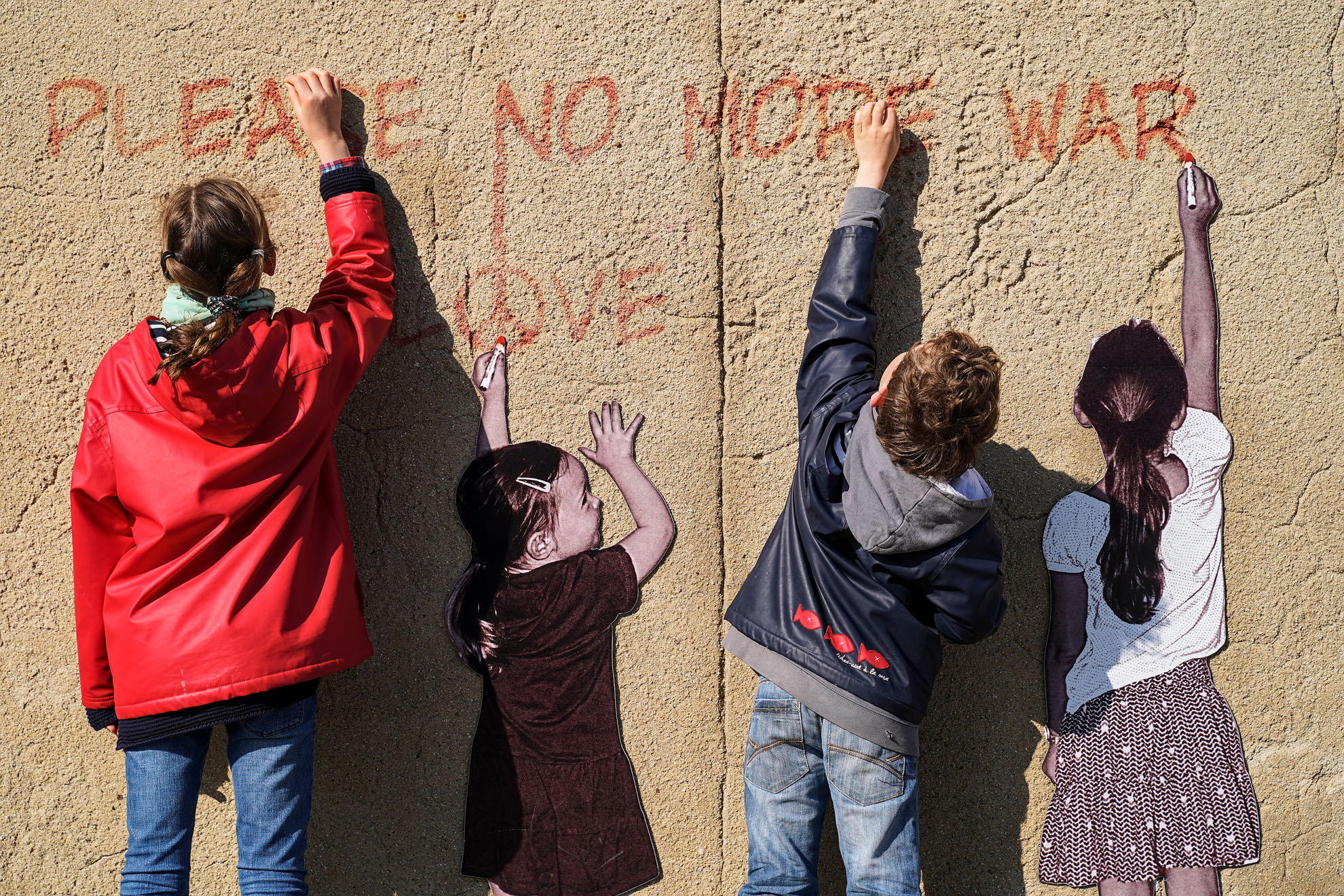
✅ Your to-do list for a Normandy visit that’s all about D-Day!
☐ Visit the Landings Museum and the Omaha Beach Memorial Museum
☐ Gather your thoughts at a military cemetery
☐ Hike around the Pointe du Hoc
☐ Immerse yourself in the D-Day experience at Arromanches 360
☐ Discover the Winston Churchill artificial harbour
☐ Step back in time at the Longues-sur-Mer battery
☐ Picnic on your favourite beach
☐ Visit the landing sites with a guide to learn all there is to know about D-Day
ℹ️ Practical information
On which beaches did the landings take place?
Five beaches were involved in landing operations:
- Utah Beach
- Omaha Beach
- Gold Beach
- Juno Beach
- Sword Beach
Towns and cities near the landing beaches
Caen, Bayeux, Arromanches, Sainte-Marie-Eglise, Courseulles-sur-Mer and Ouistreham are all close to the D-Day beaches.
When did the Normandy landings take place?
The landings took place on 6 June 1944, which is referred to as D-Day.
Which countries were involved in the Normandy landing battles?
The countries most involved were Germany, France, Great Britain, Canada and the USA.
*Which museums in Normandy are dedicated to the D-Day landings?
These are the must-see museums to learn about D-Day:
- The Caen Memorial
- Arromanches 360 (immersive cinema)
- The Landings Museum in Arromanches
- The Omaha Beach Memorial Museum
- The Juno Beach Centre, which has been awarded the Accueil vélo (cycle friendly) label. It has facilities for cyclists as well as a “low carbon” ticket offer!
- The Utah Beach Landings Museum
- The American cemetery overlooking Omaha Beach at Colleville-sur-Mer, with the graves of 9,386 American soldiers who died during the Normandy landings and the ensuing battle.
